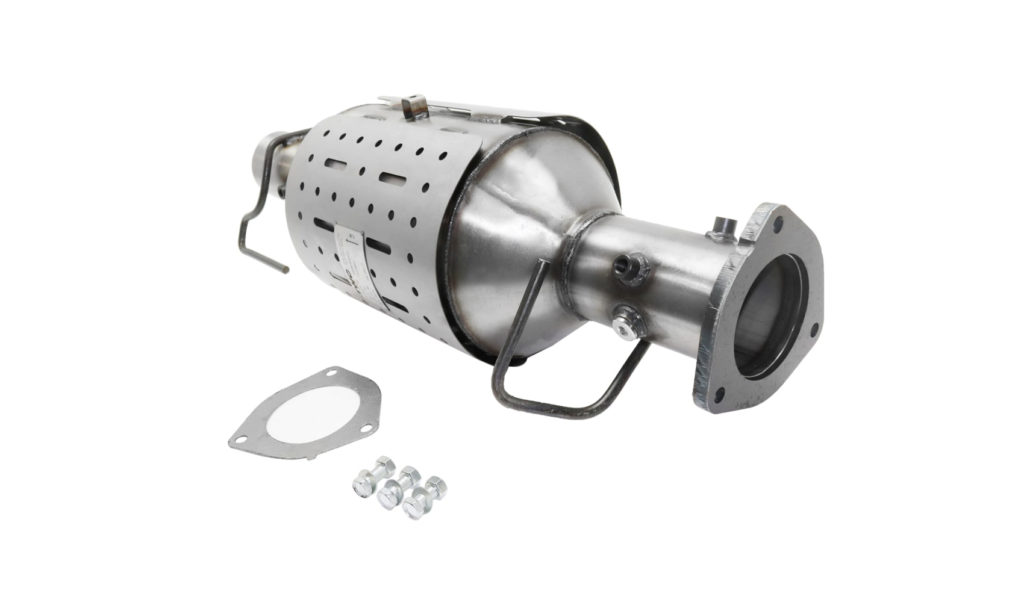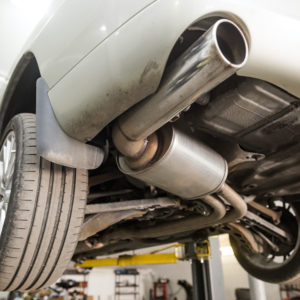Some diesel engine emissions are particulate matter typically called soot. Most of today’s diesel-powered vehicles are equipped with a diesel particulate filter (DPF) system. The filter minimizes toxic particulate matter emissions from a vehicle’s exhaust, which helps reduce air pollution and improves fuel efficiency.
P2463 is a trouble code related to diesel particulate filter restriction. Learn more about it through this article.
What Does the P2463 Code Mean?
Diagnostic trouble code (DTC) P2463 stands for “Diesel Particulate Filter Restriction – Soot Accumulation.”
Diesel particulate filters remove about ninety percent of carbon particles (or soot) from a vehicle’s diesel exhaust. Most of these filters include a DPF housing that contains a filtration element. This filter traps large soot particles and lets exhaust gasses flow through and exit the vehicle through the tailpipe.
Soot particles can clog the DPF, which can increase exhaust back pressure. The powertrain control module (PCM) monitors exhaust pressure using a sensor.

Once the PCM detects that your exhaust’s back pressure has exceeded a certain limit (the exhaust passes through the filter), it will trigger a regeneration procedure. The process involves incinerating the clogged particles and releasing them through the tailpipe.
However, if the PCM detects that the back pressure still fails to reach a certain limit, it will trigger the P2463 code and activate the check engine light.
More About the Diesel Particulate Filter
The diesel particulate filter is an emissions control device positioned in the exhaust system of a vehicle similar to a catalytic converter on a gasoline powered vehicle.
Inside the particulate filter is a ceramic honeycomb coated with compounds that help trap and eliminate soot. But during the DPF regeneration process (incinerating the soot), the filter must reach 600°C (1112°F), so the DPF is often mounted right behind the turbocharger, but it can be mounted in the exhaust system behind the catalytic converter or included within the converter.

Note: The definition of code P2463 can be different depending on the vehicle manufacturer. Consult the appropriate repair manual or repair database for the exact code definition.
What Are the Common Causes of the P2463 Code?
- Insufficient DPF regeneration
- Bad DPF pressure sensor
- Faulty hydrocarbon injector
- Clogged DPF
- Wiring issues
- Malfunctioning exhaust temperature sensor
- An issue with the PCM such as software in need of an update

What Are the Common Symptoms of the P2463 Code?
- Illuminated dashboard warning lights
- Vehicle stuck in a derated or “limp” mode
- Overheated DPF housing/other overheated exhaust components
How To Diagnose the P2463 Code
Error code P2463 is a generic trouble code which can be logged in various makes and models. While the symptoms and causes of this trouble code can be similar across vehicles, this doesn’t mean that there’s only one way to diagnose this issue. The process usually varies depending on the vehicle’s specifications.
If you’re not familiar with OBD codes and vehicle repair, it’s best to leave the job to a certified mechanic. However, if you’re a seasoned DIYer, you can attempt to do it yourself.
Here’s a video to help you get an idea of what the process might involve:
How to Fix the P2463 Code
Fixing the P2463 trouble code can be a challenging task. If you’re not equipped with the DIY knowledge and tools to get the job done, it’s a good idea to leave the job to a professional. If you plan on resolving this DTC on your own, make sure to have vehicle-specific repair information before taking on the job. We recommend consulting repair manuals like those from Chilton or an online repair database like an ALLDATA subscription.
Any information provided on this Website is for informational purposes only and is not intended to replace consultation with a professional mechanic. The accuracy and timeliness of the information may change from the time of publication.


















